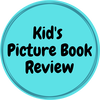What Is Traditional Publishing?Traditional publishing refers to the conventional method by which books are produced, marketed, and distributed through established publishing houses. In this model, an author submits their manuscript to a literary agent, who, if interested, represents the author in negotiations with publishing houses. The publisher, in turn, assumes responsibility for various aspects of the book's production, including editing, design, printing, distribution, and marketing. Key features of traditional publishing include:
While traditional publishing offers a range of support and resources, it can be a competitive and selective process. Authors often submit query letters or book proposals to literary agents or publishers, and acceptance is not guaranteed. The traditional publishing route is characterized by a more established and vetted approach to bringing books to market, with the backing of experienced professionals at each stage of the publishing process. What Is Self-Publishing? Self-publishing is a publishing model in which authors take on the responsibilities and tasks associated with producing, distributing, and marketing their own books, rather than relying on traditional publishing houses. In this approach, authors have greater control over the entire publishing process and retain the rights to their work. Key features of self-publishing include:
While self-publishing offers autonomy and flexibility, it requires authors to take on multiple roles, including those of writer, editor, designer, and marketer. Successful self-publishing often involves a combination of writing talent, entrepreneurial skills, and effective marketing strategies to reach a target audience. How Many Authors Get a Deal with A Traditional Publisher?Embarking on the journey to secure a traditional publishing deal is a goal for many aspiring authors. However, it's essential to understand that the traditional publishing industry is highly competitive and selective. The number of authors who successfully land a deal with a traditional publisher is a relatively small percentage of those who aspire to do so. Submission and Selection ProcessAuthors seeking traditional publishing typically start by submitting their manuscripts to literary agents or directly to publishing houses. Literary agents act as gatekeepers, reviewing submissions and representing authors to publishers. On the other hand, some authors submit directly to publishers, especially if the publisher accepts unsolicited manuscripts. Competitive Nature of Traditional PublishingTraditional publishers receive an overwhelming number of submissions, and the selection process is rigorous. Factors such as market trends, the publisher's current catalog, and the perceived commercial viability of the manuscript play crucial roles in the decision-making process. As a result, only a fraction of submitted manuscripts receive offers for publication. Statistics and Success Rates: What Percentage of Authors Get a Deal?While exact statistics vary, it's commonly estimated that a relatively low percentage of submitted manuscripts secure traditional publishing deals. Success rates often hover around the 1% percentage range. The competition is fierce, and publishers seek manuscripts that not only demonstrate literary merit but also align with their publishing goals and market trends. Building a Strong Query and ManuscriptAuthors increase their chances of securing a traditional publishing deal by presenting a polished and compelling manuscript. Crafting a well-written query letter, showcasing a unique and marketable story, and understanding the specific preferences of literary agents or publishers can contribute to standing out in the crowded submissions pool. Exploring AlternativesGiven the challenges of traditional publishing, some authors explore alternative routes, such as self-publishing or hybrid publishing models. These avenues provide authors with greater control over the publishing process but come with their own sets of challenges and considerations. While securing a traditional publishing deal is a significant achievement, authors should be prepared for a competitive and often unpredictable journey. Persistence, dedication to craft, and a strategic approach to submissions can enhance an author's chances of realizing their dream of traditional publication. The Pros & Cons of Traditional Publishing vs. Self-Publishing Choosing between traditional publishing and self-publishing is a crucial decision for any aspiring author. Each path comes with its own set of advantages and challenges. Let's explore the pros and cons of both approaches to help you make an informed decision. Traditional Publishing Pros
Cons
Self-Publishing Pros
Cons
In the end, the decision between traditional publishing and self-publishing depends on your goals, preferences, and the specific nature of your book. Authors often find success through both avenues, and the key is to align your publishing choice with your unique aspirations and circumstances. Which Authors Should Traditionally Publish? Traditional publishing is a route that many authors aspire to take, and it can be an excellent fit for certain writers and types of books. Here are scenarios where traditional publishing might be the ideal choice: Debut Authors Seeking Validation Prospective authors seeking the validation and prestige associated with traditional publishing often find it rewarding. A traditional publishing deal can provide a sense of accomplishment and professional recognition, especially for debut authors aiming to make a mark in the literary world. Authors in Mainstream Genres Writers with books in mainstream genres, such as mystery, romance, or literary fiction, might find traditional publishing advantageous. Traditional publishers often have established distribution channels for these genres, increasing the likelihood of reaching a broad readership through bookstores and libraries. Authors with Limited Marketing Resources If you prefer to focus primarily on writing and lack the time, resources, or inclination to handle extensive marketing efforts, traditional publishing may be a better fit. Publishers typically invest in marketing and publicity, helping your book gain visibility in a competitive market. Those Seeking Editorial Support Authors who value professional editorial support and wish to refine their manuscripts with the assistance of experienced editors may find traditional publishing appealing. Publishers provide comprehensive editing services, ensuring a polished final product. Writers Targeting International Markets For authors with aspirations to reach international audiences, traditional publishing offers advantages. Established publishers often have global distribution networks, facilitating the availability of books in various countries. Authors Interested in Literary Awards If winning literary awards and gaining critical acclaim are integral to your goals, traditional publishing may be the pathway to achieving these objectives. Publishers can submit books for prestigious awards, elevating the book's profile in literary circles. While traditional publishing is well-suited for these scenarios, it's crucial to recognize that the publishing landscape is evolving. Self-publishing and hybrid publishing models have become increasingly viable for a broader range of authors. The decision between traditional and alternative publishing routes should align with an author's specific goals, preferences, and the unique characteristics of their work. It's essential to carefully consider your priorities and weigh the pros and cons of each approach to determine the best fit for your writing journey. Which Authors Should Self-Publish? Self-publishing has become a popular and empowering choice for many authors, offering a direct route to readers and creative control over the publishing process. Here are scenarios where self-publishing might be the ideal choice: Authors Seeking Creative Control For authors who cherish creative autonomy and wish to have complete control over their book's content, cover design, and overall presentation, self-publishing is an excellent option. It allows for the realization of your artistic vision without external influence. Niche or Non-Traditional Genres Writers exploring niche or non-traditional genres that may not align with mainstream market preferences can benefit from self-publishing. It provides the freedom to experiment with unique concepts and cater to specific, targeted audiences. Authors with a Strong Online Presence If you have built a substantial online presence through a blog, social media, or other platforms, self-publishing aligns well with your existing marketing efforts. Authors who are adept at digital promotion can leverage their online presence to effectively market and sell their books. Time-Sensitive Content Authors with time-sensitive or topical content might find self-publishing advantageous due to its quicker time-to-market. This is particularly relevant for writers responding to current events, trends, or those who wish to maintain a flexible publishing schedule. Non-Fiction Authors with Specialized Knowledge Writers possessing specialized knowledge in a particular field, especially non-fiction authors, can leverage self-publishing to share their expertise directly with their target audience. It allows for a faster dissemination of knowledge without the lengthy traditional publishing timeline. Authors Embracing Entrepreneurial Roles If you enjoy taking on entrepreneurial roles, including marketing, promotion, and building a personal brand, self-publishing provides a platform for authors to thrive as independent entrepreneurs. It offers direct financial rewards based on your marketing efforts and sales performance. Those Requiring Flexibility Authors who appreciate flexibility in making decisions regarding pricing, promotions, and distribution channels are well-suited for self-publishing. It allows for quick adjustments based on real-time feedback and market dynamics. While self-publishing is a viable choice for these scenarios, authors should carefully consider their individual goals, preferences, and the nature of their work. The publishing landscape offers a spectrum of options, and the decision between traditional and self-publishing should align with your unique aspirations for your writing journey. Is Self-Publishing or Traditional Publishing Right for Me? As you embark on your journey to bring your book to the world, the pivotal decision of whether to pursue self-publishing or traditional publishing requires thoughtful consideration. Each path offers distinct advantages and challenges, and the choice should align with your individual goals, preferences, and the nature of your work.
Consider Your Priorities Begin by clarifying your priorities as an author. If you value creative control, want to maintain a flexible timeline, and have a robust online presence, self-publishing might be your ideal avenue. On the other hand, if you seek the validation of a traditional publishing deal, appreciate editorial support, and desire the prestige associated with established publishers, the traditional route may be more fitting. Evaluate Your Genre and Audience Consider the genre and target audience of your book. Traditional publishing often excels in mainstream genres with established distribution channels, while self-publishing provides niche authors the freedom to explore unconventional topics and cater to specific reader demographics. Assess Your Marketing Inclinations Determine your comfort level with marketing and promotional responsibilities. If you enjoy taking an active role in building your brand, engaging with readers, and handling marketing strategies, self-publishing allows for entrepreneurial autonomy. On the other hand, if you prefer a more hands-off approach to marketing, traditional publishing may provide the professional support you need. Reflect on Your Timeline and Goals Consider your timeline and overarching goals. If you aim for a quicker time-to-market and wish to respond swiftly to market trends, self-publishing offers flexibility and speed. Traditional publishing, while prestigious, often involves a more extended timeline from submission to release. Explore a Hybrid Approach In today's dynamic publishing landscape, authors are increasingly exploring hybrid approaches that combine elements of both self-publishing and traditional publishing. Hybrid models offer a middle ground, allowing authors to retain creative control while benefiting from certain traditional publishing services. Seek Professional Guidance If you're uncertain about the best fit for your book, consider seeking professional advice. Literary agents, publishing consultants, and industry professionals can provide valuable insights based on your unique circumstances.
0 Comments
Your comment will be posted after it is approved.
Leave a Reply. |
Categories
All
Archives
May 2024
|


 RSS Feed
RSS Feed